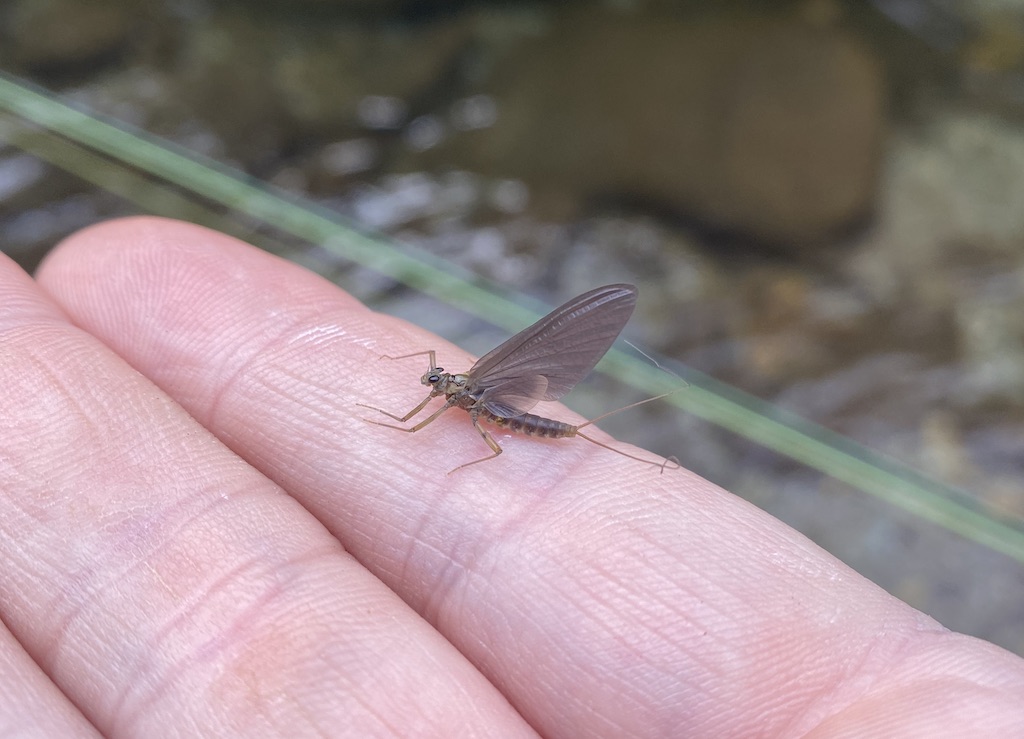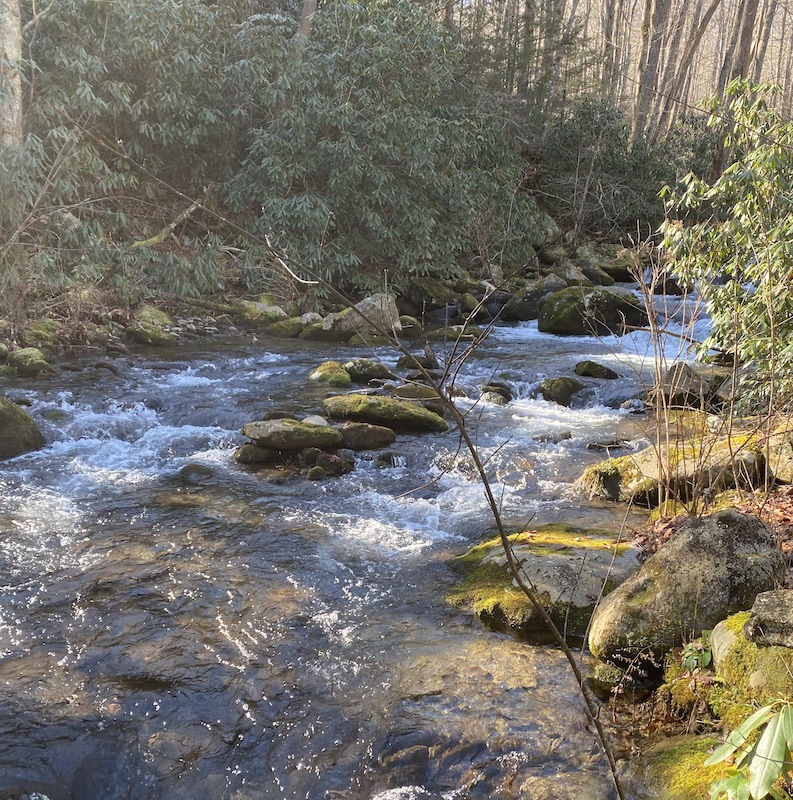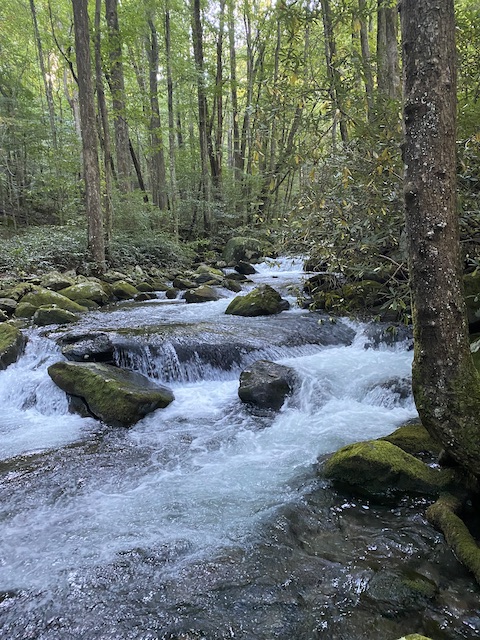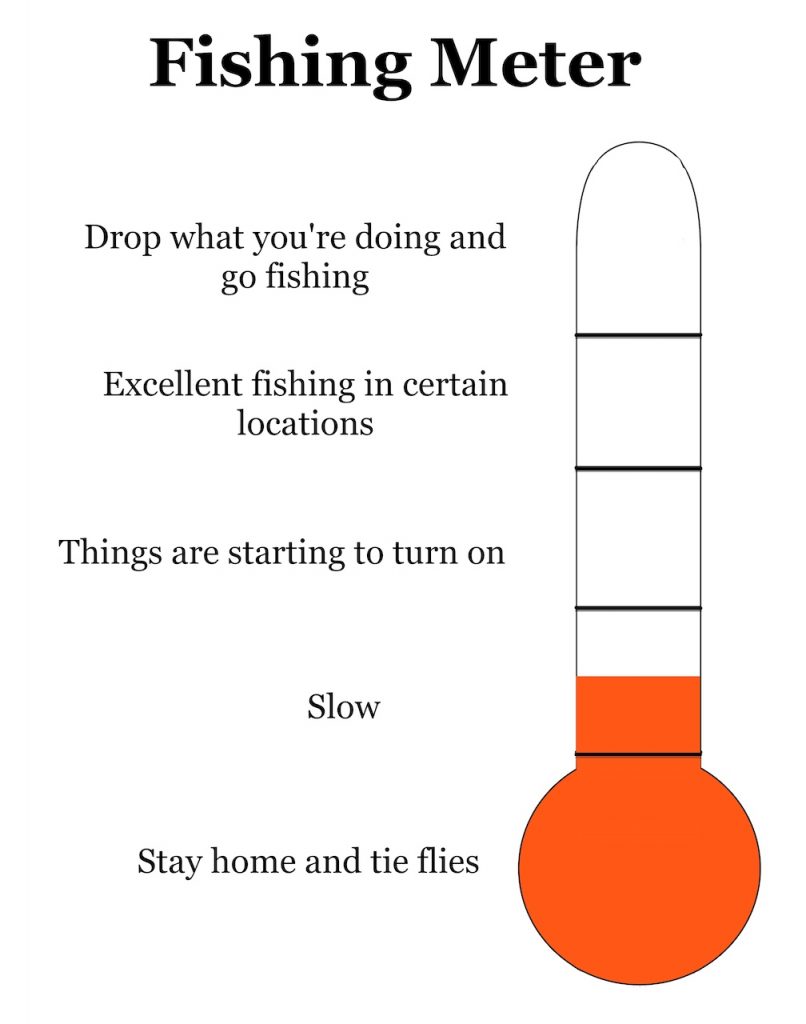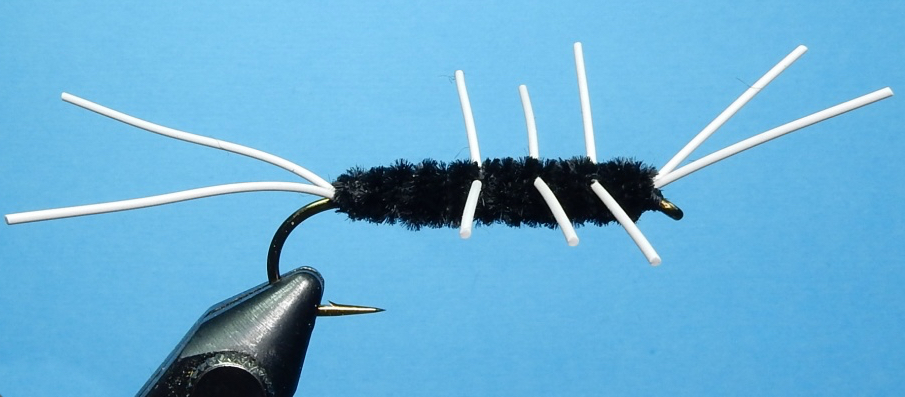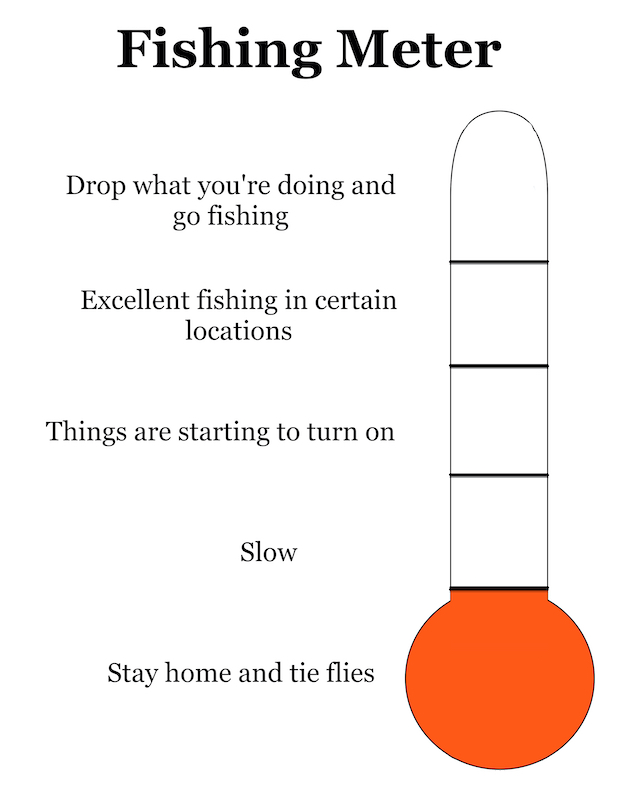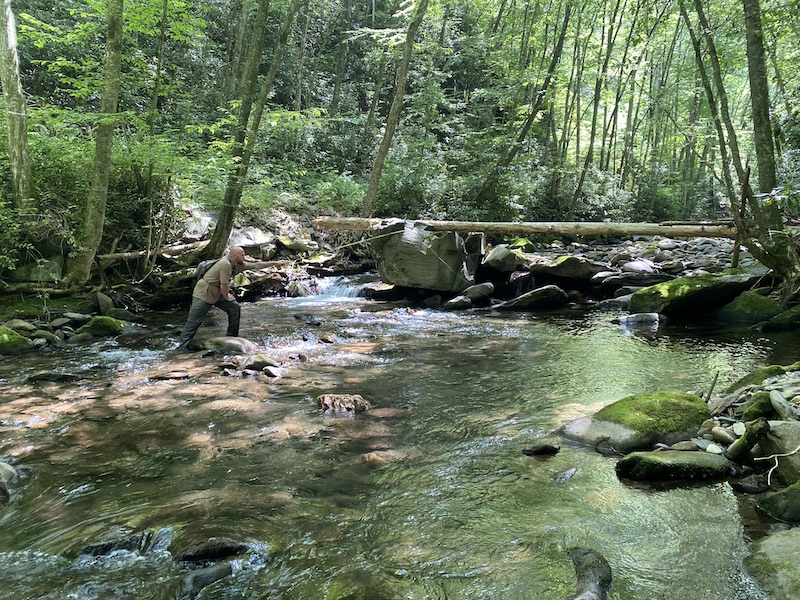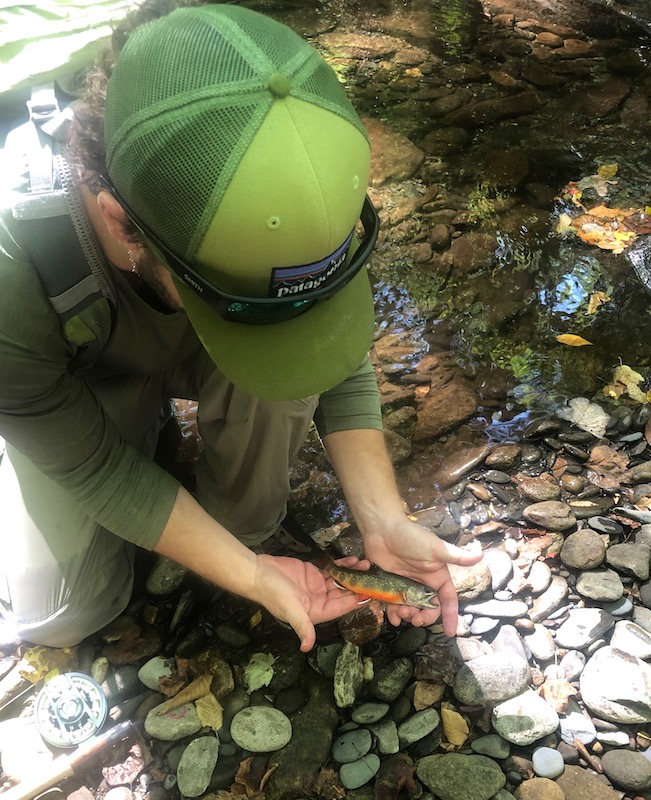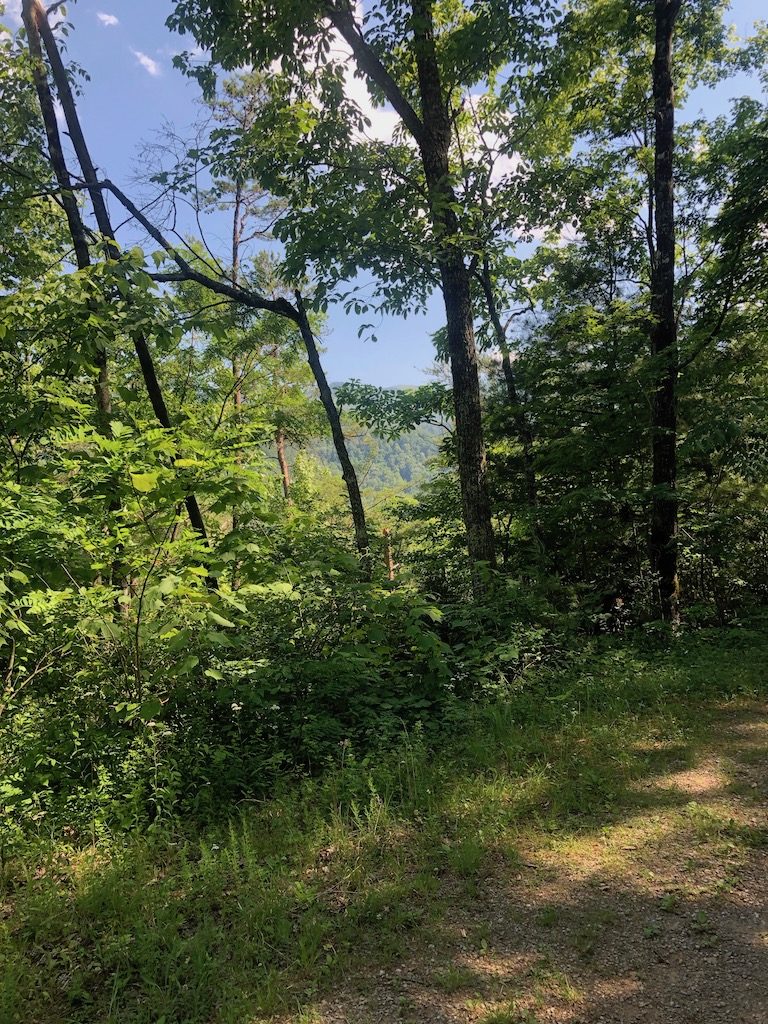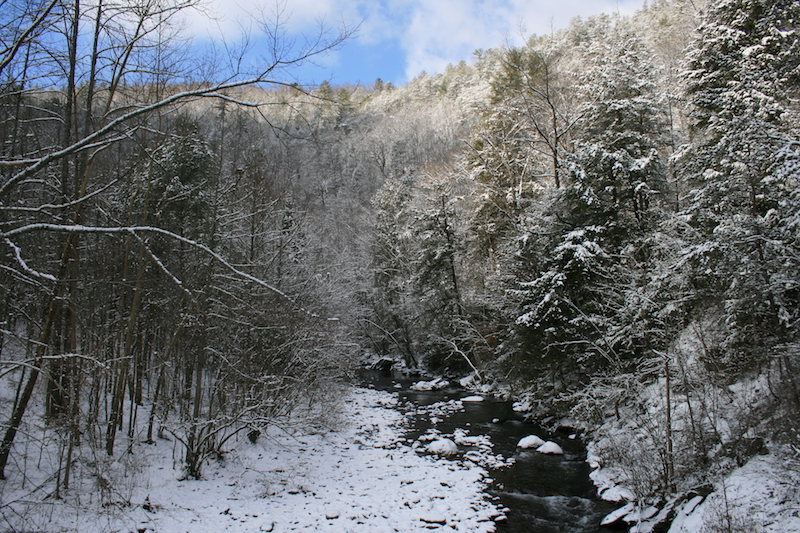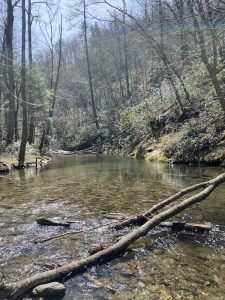
Location
Smoky Mountains

Water Levels
Little River: 531cfs / 2.69 feet
Pigeon: 979cfs / 2.78 feet
Oconaluftee: 819cfs / 2.30 feet
Cataloochee: 178cfs / 2.86
Water Temperatures (approximate)
Low elevations: 49 – 53 degrees
Mid elevations: 46 – 51 degrees
High elevations: 42 – 47 degrees
Current Conditions
Last week turned out to be great until Thursday, which is exactly what we expected. Heavy rain hit Wednesday night and Thursday and brought stream levels up substantially. Additionally we had some cooler overnights over the weekend and water temperatures took a little dip.
We are just now beginning to rebound from those two events. Water levels are still a little high but manageable, especially on smaller streams. And water didn’t come up as much on the North Carolina side, so they are running only slightly above normal.
The best fishing is on lower elevation streams right now. Fish will be most active in the afternoon when it’s a little warmer. Many anglers are talking about catching a lot of very small rainbows. This is pretty common for right now as the larger rainbows are spawning. We’ll hopefully see them get a little more active in the coming weeks.
Projected Conditions
This is looking like a potential replay of last week. Just as things are bouncing back to normal, we have what may be a big rainmaker system moving through on Thursday. Projections are for more than an inch of rain, which would most certainly blow streams out. And you guessed it, that’s followed by a cold front this weekend. Keep an eye on those stream gauges if you go – reading stream gauges.
Tips
In general, you want to seek out slower water and you want to fish the warmest water possible right now. Try to concentrate your efforts on the middle of the day, stick to the lower elevations and look for areas that get a little more sunlight. Finding Feeding Trout in Early Spring.
Hatches/Fly Suggestions
Quill Gordons are still popping off here and there. Again, it just depends where you are. I’ve been on pools where I only see two or three, and two pools up they’re coming off everywhere you look. They could show up at any time but mostly, we’re seeing the better hatches mid to late afternoon.
Standard Quill Gordon patterns should work well for topwater, so will a Parachute Adams – sizes #14 – #12. Everyone seems to have their favorite Quill Gordon nymph imitation. Mine is an olive Hares Ear. When the hatch is coming off pretty good, I always do best with an emerger, and my favorite is a Mr. Rapidan Emerger.
Blue Quills are coming off in better numbers in sizes #18 – #16. You’ll probably still run into some Blue Wing Olives, and there is always an assortment of dark caddis and stoneflies this time of year. A size #16 grey Elk Caddis will do the job for most of them. Otherwise, a lot of your favorite attractors should do fine. For early spring, I always like flies with peacock herl, Zug Bugs and Prince Nymphs in particular.
Featured Fly



